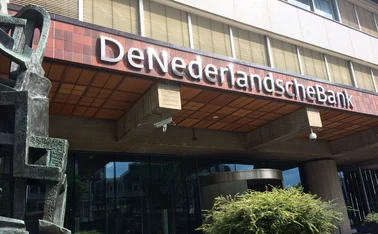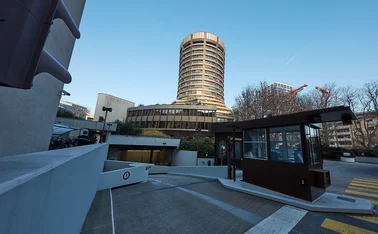
Saudi Arabia’s Alkholifey on economic restructuring, reserves and cyber security
Head of Sama discusses major changes being implemented in Saudi Arabia
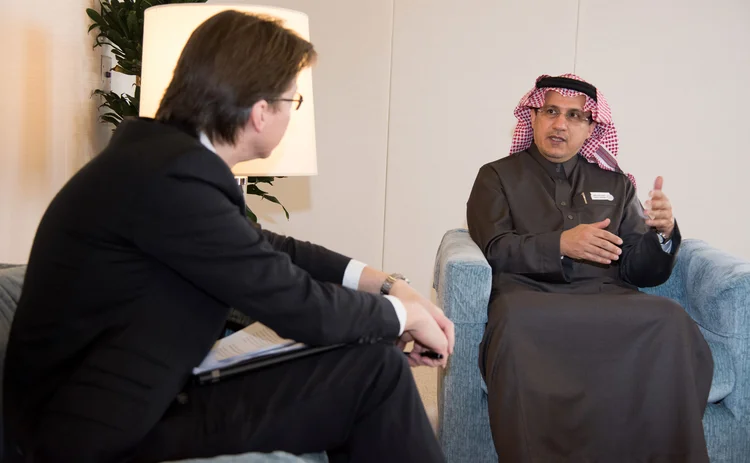
What do you view as the major opportunities and challenges facing the Saudi Arabian Monetary Authority (Sama) under your leadership?
Globally, challenges emerge from the tightening of global financial conditions. Central banks should carefully balance the need for continued monetary accommodation, bearing in mind weak inflation, and the build-up of asset valuations and leveraging activities. Domestically, Saudi Arabia is making important progress in implementing comprehensive reforms. These developments reinforce our commitment as a central bank to progress with our reform agenda, which will strengthen the environment for sustainable growth and development in Saudi Arabia, in line with the goals of the Vision 2030 and its 12 realisation programmes. The changes in the macroeconomic environment and, at the same time, maintaining financial stability are important elements for Sama.
We will continue to pursue our responsibilities in terms of maintaining monetary and financial stability. Sama will also continue to enhance its role by executing monetary policy aligned to the national economic agenda, providing efficient banking services to the government, being open to the new fintech [financial technology] developments and vigilant regarding cyber-security threats, working with other stakeholders in developing the domestic capital market, and seeking to strengthen national and international co-operation.
Can you share what impact the country’s Vision 2030 programme and the National Transformation Program has had for Sama?
Saudi Arabia has adopted Vision 2030 as a road map to stimulate economic growth and promote further development in the kingdom. The vision outlines the kingdom’s policies, objectives and commitments to be a pioneer at all levels. The Council of Economic and Development Affairs has launched 12 strategic programmes, including the Financial Sector Development Program. The FSDP is chaired by the ministry of finance, and Sama and the Capital Market Authority are both members. The FSDP programme is in process, and will be announced soon.
Our advice to the government has been to take things step by step. The policymakers are listening, and there has been a more gradual removal of subsidies, launching of value-added tax, and so on. Also, if something does not really work, there is an ability to reverse it
What impact are current political events in Saudi Arabia having on Sama?
We see a strong, determined and young leadership with a focus on changing politics, society and the economy. The main impact for Sama is in the economic area, where we see a strong desire to fix things and implement reforms. We are happy with the vision, the planning and the reforms. The challenge is the ability for the economy to absorb all the changes at once. So our advice to the government has been to take things step by step. The policymakers are listening, and there has been a more gradual removal of subsidies, launching of value-added tax, and so on. Also, if something does not really work, there is an ability to reverse it, as occurred with some of the salary changes in early 2017 and pushing back the target date for the fiscal balance programme from 2020 to 2023. While the changes will take some time to be absorbed by the whole economy, we should end up with a more diversified economy, where there is greater reliance on the private sector and less on the government. We hope we will see a more modern economy.
The riyal is pegged at 3.75 to the US dollar. How do you assess the pros and cons of a pegged currency versus another policy mandate, such as an inflation target? Have events subsequent to the global financial crisis changed your views in any ways?
Over the years, Sama has been able to maintain a stable exchange rate, even during different economic cycles and market conditions. This sustained stability could not have been achieved without an effective operational framework. Indeed, the short-lived volatility in both the spot and forwards markets is evidence of the effectiveness of the current framework. One way to view the benefits of the exchange rate policy to our economy is by measuring the performance of our economy compared with other countries. When compared with Group of 20 countries during the period from 1986 (the inception of our current fixed exchange rate policy) up until 2016, Saudi Arabia has been among the top six G20 countries in terms of GDP growth, with an average growth rate of around 4%. In addition, given the structure of our real and external sectors, we observe that the current foreign exchange policy has helped maintain a modest inflationary pressure relative to G20 countries during the same period. This price stability has given confidence to business and helped government to plan effectively.

Some people have described the global monetary and financial system as a ‘non-system’. Does this worry you?
Not that much. We see some challenges for the economies of some of the reserve currencies. But one has to be careful, especially where to place your reserves. We typically want AAA countries, but with the changes in ratings, we have to move this stance somewhat. But I am not worried about the international monetary system. It is still serving our economy well. US dollar strength is still there – it has the biggest in trade volumes, and the deepest and most liquid markets. That is why we have had our fixed exchange rate since 1986. We do not worry about occasional speculation against the riyal. As we speak today in Saudi Arabia, there are many reforms taking place: the exchange rate is not one of them!
There has been a restructuring of Saudi Arabian assets, including foreign exchange assets held by Sama, and there are questions about the future role of the Public Investment Fund. Is there a big change taking place?
No. Sama has the same strategy when it comes to investing our reserves, and we take care of our national foreign exchange reserves. Overall, the strategy has not changed that much. I chair the investment committee, which includes the vice-governor, some of the deputy governors and technical experts. We meet on a quarterly basis, when we approve transactions for the next quarter. There are some tactical movements here and there – and if there is a need to move something, we get together. But, overall, the strategy is the same. However, given the squeeze from lower oil prices and the base being lower than it was two years ago, it is normal to see some tactical moves here and there – for example, from equities into bonds. But we are doing a good job on that.
The countercyclical policies used in the past to accumulate reserves – which rose to one of the highest levels in the world – were to ensure a gradual transition and an effective absorption of any shock. The objective is to gradually phase out our dependence on oil and rely more on other sources of income
While your reserves are some of the highest in the world, as you mention, they have fallen sharply since 2015. Does this concern you in any way?
In fact, the countercyclical policies used in the past to accumulate reserves – which rose to one of the highest levels in the world – were to ensure a gradual transition and an effective absorption of any shock. The objective is to gradually phase out our dependence on oil and rely more on other sources of income. Moreover, the decline in Sama’s assets has moderated recently, partly reflecting the fiscal consolidation efforts carried out by the government. This is in line with the historical relationship between the government’s fiscal balance and the level of Sama’s foreign reserves. The decline in reserves has moderated also because of the government’s successful foreign debt issuance programme. Hence, the need to tap into the stock of reserves will be optimised against the degree of fiscal consolidation and access to the international debt markets. Then there is the fact that the improvement in oil prices will reduce the need to tap into our reserves.
How is the ‘divergence’ in US and eurozone monetary policies affecting your reserves management? What efforts are you making to diversify assets and increase return?
Sama follows a rigorous and disciplined investment policy that is designed to ensure diversification across a range of asset classes. The primary aim of our investment process is to support the implementation of monetary policy while withstanding short-term market fluctuations, as well as optimising risk-adjusted return. The investment policy lays out our strategic asset allocation that fits the liquidity and risk profile of Sama, and allows for reasonable tactical movements across a spectrum of asset classes to exploit investment opportunities in the face of the changing global macro environment. The investment policy, which also includes Sama’s currency positioning, is reviewed on a regular basis to account for structural changes in the global financial markets, along with changes in our liability profile. In fact, our latest numbers show there was an increase in reserves.
Sama has changed its approach to risk management during the past few years. Did this effort lead to any surprising results – in terms of major risks that you now spend more time addressing, or risks that were not as great as you at first perceived them to be? What are your plans in this area?
Lately, we revisited our risk management framework to update it in line with the globally increasing focus on this factor. This enhanced risk management framework underpins a more comprehensive coverage of financial and non-financial risks (eg, operational, reputational, financial and non-compliance risks). The framework defines policies, procedures and methodologies to foster risk management in day-to-day operations to contain risks from materialising. Some of our departments with high inherent risks required immediate attention to mitigate non-financial risks. In short, risk management in co-ordination with higher management, the Risk and Compliance Committee and risk owners took actions to contain extreme risks and ensure overall risks are in line with Sama’s risk appetite.
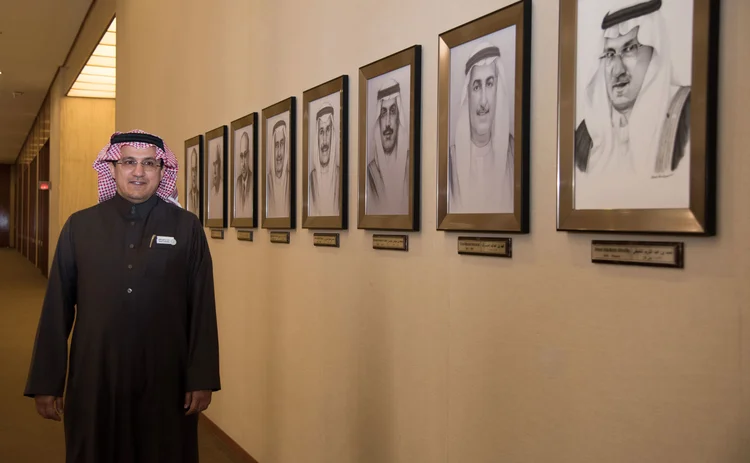
How is Sama helping to drive through payment system reform in Saudi Arabia?
Sama launched the first national debit card system – Span – in 1990 through the newly established banking technology division. This payments division was responsible for developing the first national payments strategy for Saudi Arabia, defining the blueprint for systemic and strategic growth and development of payment systems in the kingdom. Some of the initiatives over the past 30 years include: the development and launch of Sarie, the national real-time gross settlement system, facilitating instant cross-bank payments and managing interbank risk through collateralised liquidity management; redeveloping the national debit card scheme (now called Mada) to generate in excess of 1.4 billion transactions in 2017; expanding cashless payment capabilities in the retail merchant sector, with growth of 130% in the three years between September 2014 and September 2017, connecting more than 300,000 point-of-sale terminals; developing and launching the prepaid service regulatory environment (in 2013) and the delivery of over 7 million prepaid cards into the Saudi market, supporting financial inclusion and facilitating a reduction in cash transactions; developing and introducing Sadad, the national electronic bill presentment and payment scheme and infrastructure, accounting for over 210 million bills in 2017; and developing and introducing the real-time secure non-card-based e-commerce payments (Sadad account) in the second quarter of 2016, which facilitates e-commerce payment accounts.
Sama is currently in the process of developing a national automated clearing house for electronic payments, which will provide the platform for significant additional payment solutions and innovation. In conjunction with other government agencies and ministries, Sama has overseen the development of the banking and payments ecosystem to facilitate growth in financial inclusion and the banked population.
Will there be a greater role for the private sector?
We plan to keep supervising the system, but we will allow the private sector – particularly small and medium-sized enterprises – to play a role in operating the payments system. This is a new strategy we have adopted, and hopefully you will see new players operating in the market.
We plan to keep supervising the system, but we will allow the private sector – particularly small and medium-sized enterprises – to play a role in operating the payments system
What efforts have you made to address cyber-security threats?
During the last few years, Sama has made tremendous efforts and investment in strengthening cyber-security practices. Recently, we developed and mandated a cyber-security framework for the financial sector based on international best practices, such as those supported by the International Organization for Standardization and the [US’s] National Institute of Standards and Technology. The aim is to offer a unified approach to address cyber-security challenges across the financial sector. Sama has also conducted a number of specialised inspection programmes of banking activities and operations, including information security and business continuity. We have made sure banks get software support for some systems related to ATMs and cards (for example, Microsoft stopped supporting some old versions of Windows, requiring banks to upgrade to prevent service interruption and to continue getting the right support from the software providers). Sama has also conducted an information security assessment for regulated entities that allows us to have up-to-date national banking risk assessments of cyber security and key common issues.
Is this linked to your cyber-security strategy?
Sama has also developed a cyber-security strategy in collaboration with the banking sector as part of its overall strategy for 2020. The main objective is to provide a clear road map for implementing standardised cyber practice across the financial sector to enhance our security posture and to increase resilience against cyber attacks. Sama’s new cyber-security committee which comprises Sama representatives and heads of information security of the banks, was established to share knowledge and experiences related to cyber attacks, as well as to develop a common approach to deal with similar cyber attacks in future. Banks now immediately share critical cyber-security incidents/attempts with Sama, and this in turn is communicated to all relevant parties to ensure proactive measures can be taken. Furthermore, Sama is also actively collaborating with the [UK’s] National Cyber Security Centre and co-ordinating with other jurisdictions in regard to cyber security.
How can you be confident the banking and payment systems are secure?
There will never be a 100% secure system anywhere in the world. You can put in place more sophisticated security, IT and people, yet challenges arise. We remain alert. We have good people working in this field, and we keep training them. Seventeen people graduated from an intensive security programme from the US and UK that will work in Sama and outside Sama, the banks and other government entities afterwards. So far, the IT used by Sama and the banking system has not been compromised. Sama reviews the banks’ procedures every quarter, and offers recommendations to close gaps that need to be eliminated or remedial action will take place. These reviews of banks can go all the way up to governor level.
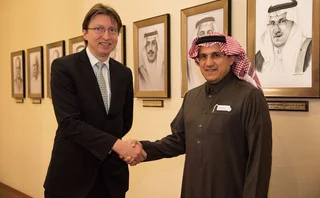
What role is Sama playing to develop capital markets in Saudi Arabia? Do you envisage fintech playing a large role?
Sama plays the role of enabler in providing payment and settlement systems for government bonds, and co-ordinates with other regulators, such as the Capital Market Authority, to develop the capital market in a wider context. Fintech activity is likely to have an impact on the operations of the capital market. Solutions related to blockchain, artificial intelligence and peer-to-peer lending are expected to reduce the cost of capital, increase the accessibility to capital and reduce the friction in the capital market.
Aligned with the National Transformation Program 2020 and Saudi Vision 2030, Sama is committed to supporting fintech activity in the financial services industry. Sama acknowledges the value added by financial services technology products and services to the Saudi Arabian financial services industry, whilst also appreciating there are risks associated with fintech innovation. Therefore, we have adopted a dual approach.
The first is a risk-based approach to testing and regulating fintech innovation – Sama is currently developing a ‘regulatory sandbox’ that will provide a light-touch, risk-based approach to testing innovative products. Through the regulatory sandbox, applicants are able to test innovative solutions, and Sama can understand the risks associated with the solutions and regulate them effectively before they are launched into the marketplace.
Second, we have launched the Future of Banking Symposium, which consists of a number of different initiatives to support the development of the fintech ecosystem in Saudi Arabia. Initiatives will include building a fintech community, creating awareness about fintech activity and providing programmes to support local fintech. Sama is working closely with banks and fintech companies to ensure an appropriate balance is reached between regulating the banking infrastructure, to maintain financial stability, and enabling fintech innovation.
How important are the government’s recent sovereign bond issuances for helping to build a yield curve as well as for financing purposes? What plans are there for further issuance?
Of course, the bond issuance is a positive step forward to build a yield curve and further develop the local bond market. Since public debt is low, it is important to utilise this tool to alleviate the pressure on foreign reserves and provide additional sources of finance. In addition, having a deep bond market will further enhance the stability of the financial system. With regard to the second question, plans and decisions for further issuance are handled by the ministry of finance.
There have been some efforts to build and internationalise the capital market in Saudi Arabia. Is this helping reduce the reliance on the banking sector?
It is still heavily reliant on the banking system. We want to move towards a greater role for capital and debt financing. With more issuance coming from the government, we will be able to develop the yield curve, and hopefully this will help the development of the secondary market. The Capital Market Authority is doing a good job attracting more qualified foreign investors to the system, and there is an effort to include Saudi debt in emerging market indexes.
It is expected that persistently low oil prices will have an impact on the economy, including the financial sector. However, financial institutions, particularly the banking sector, have built large buffers during the upturn of the cycle that has significantly increased their resilience against macroeconomic shocks
How resilient is the financial system to sustained low oil prices?
It is expected that persistently low oil prices will have an impact on the economy, including the financial sector. However, financial institutions, particularly the banking sector, have built large buffers during the upturn of the cycle that has significantly increased their resilience against macroeconomic shocks. So far, after more than two years of low oil prices, banks remain well capitalised, with capital adequacy ratios of more than 19% – of which, 16% was Tier 1, high-quality capital – as of the second quarter of 2017. Other financial soundness indicators also remained healthy, such as the 1.4% non-performing loans (NPL) ratio, 169% provisions coverage ratio and 14% return on equity ratio as of the second quarter of 2017. Not to mention, banks’ liquidity is at a comfortable level, as indicated by Basel liquidity ratios: the liquidity coverage ratio (LCR) is 210.4, and the net stable funding ratio is 122.6. Stress testing has also confirmed this resilience. As per the 2016 stress-testing results, under a severe macroeconomic shock – where oil prices remain as low as $25 per barrel – capital remains stable around its current level, while NPLs increase only mildly. Provisions will decrease, but will remain above 100 % of NPLs.
How are efforts to establish the Depositor Protection Fund (DPF) progressing, following the introduction of the deposit insurance scheme? Do you have a workable resolution framework established, as recommended by the Financial Stability Board (FSB)?
The DPF was established on January 1, 2016, and all banks operating in Saudi Arabia are required to be members. The DPF has started collecting premiums every quarter as of the first quarter of 2017 from all members. A DPF governance committee has been established with the clear aim of making sure the DPF serves its purpose in promoting financial stability and protecting depositors within the eligible limit. The governance committee is also in the process of ensuring the DPF is compliant with the core principles of the International Association of Deposit Insurers. In addition, the DPF was covered as part of the International Monetary Fund/World Bank financial-sector assessment programme to Saudi Arabia this year, and we have received positive feedback from the experts on what has been achieved and steps taken so far, and valuable recommendations going forwards. As for the resolution framework, Sama has drafted a resolution law, in co-ordination with the relevant government agencies, which is currently going through the legislative process.
Why was your LCR standard deemed as not fully compliant regarding Basel III liquidity coverage regulations? What are you doing to address it? For example, are you looking to strengthen Sama’s liquidity forecasting and management frameworks?
The Basel III Regulatory Consistency Assessment Programme (RCap) of LCR provided a clear example that Basel rules can easily overlook the requirements of some emerging markets. This was perhaps the first time the RCap assessment was presented with a zero-risk-weighted country that does not have “large, deep and active markets”. The LCR requirements place greater emphasis on banks holding high-quality liquid assets, such as government debt, subject to a narrow, stringent and selective definition of large, active and deep markets that is difficult to apply to most emerging markets and non-zero risk weighted countries. In this case, the LCR rules had no criteria to evaluate a 0% risk-weighted emerging market country, such as Saudi Arabia, which did not have a large, active and deep debt market – even though these assets can be easily liquidated in international markets or repoed with central banks to raise cash with little or no loss in value. Consequently, it resulted in Saudi Arabia being a largely compliant country for Basel LCR purposes, although it has an average LCR of 200% for the banking system, which is more than twice the current Basel requirement.

Are you satisfied with your macro-prudential toolkit and its formal frameworks?
Sama has been making a significant progress in establishing and formalising a macro-prudential framework. This significant progress has been acknowledged by the FSB peer review published in November 2015 as well as the IMF’s Financial Sector Assessment Program report in October 2017. However, there is still room for improvement and to fine-tune the macro-prudential toolkit and close up some data gaps.
What efforts are you making towards anti-money laundering (AML) and combating the financing of terrorism (CFT)?
Saudi Arabia has taken many efforts to counter money laundering and terrorist financing. Saudi Arabia is committed to comply with international standards and conventions, and has taken many legislative measures. Recently, Saudi Arabia developed a comprehensive set of revisions to both the Combating Money Laundering and Combating Terrorism and Terrorism Financing laws, and the implementing regulations under both laws. The new laws enhanced the kingdom’s legal framework to be fully in line with the revised standards of the Financial Task Action Force. Therefore, the legal framework has strengthened the customer due diligence framework, the identification of the beneficial owner, the monitoring and reporting of suspicious systems, and record-keeping. A requirement for public authorities as well as financial institutions and designated non-financial businesses and professions to take a risk-based approach to AML/CFT and to allocate their resources in line with the identified risks.
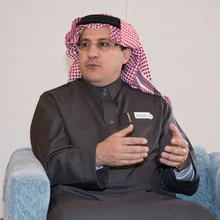
In addition, Saudi Arabia conducted two separate national assessments (during 2016–17) for money-laundering and terrorism-financing risks. The Permanent Committee for Anti-Money Laundering is responsible for conducting money-laundering national risk assessments, while the Permanent Committee for Combating Terrorism is responsible for anti-terrorism-financing national risk assessments. The outcome of the two national assessments shall help to inform appropriate and proportionate AML/CFT policy responses, and it will also serve as a starting point for more thorough research and strategic reports in the future. They shall help the authorities to refine the nature and magnitude of money-laundering and terrorism-financing threats, vulnerabilities and consequences, thus enabling the authorities to even better target the drivers of money-laundering and terrorism-financing risk in Saudi Arabia.
Furthermore, the regulators are actively working to ensure that financial and non-financial institutions are complying with the legal and operational requirements using various methods and tools, such as desk-based review, on-site inspections and meetings with private-sector representatives. Over the last two years, specialised AML/CFT units have been established or reinforced at all supervisory authorities. And the supervisory frameworks of Sama, the Capital Market Authority, the ministry of commerce and investment, and the ministry of justice have been majorly improved. AML/CFT risk assessment tools have been developed for each supervisory authority and each sector separately. And the supervisory programme of each agency has been revised to focus on the higher-risk institutions, and the on-site inspection procedures applied by each supervisor have been revised to reflect a risk-based approach. Authorities with competences in AML/CFT have been provided with additional resources. For some authorities, the institutional structure has been strengthened to further promote their role and the effectiveness of their work.
Saudi Arabia is the only G20 nation in the Middle East. What efforts have you made to help co-ordinate the G20’s agenda with other Gulf and Middle East states? Will you do more in the years ahead?
The G20 established the FSB in April 2009 to co-ordinate and prioritise regulatory reforms and to encourage and monitor their rapid implementation. The FSB established the six regional consultative groups (RCGs) pursuant to the directions from the G20 leaders at their Toronto summit. The G20 asked the FSB to expand upon and formalise its outreach activities beyond the membership of the G20 and the FSB, in order to better reflect the globalised and integrated nature of the world financial system. The mandate of the RCGs is to bring together financial authorities from FSB member and non-member countries to exchange views on vulnerabilities affecting financial systems, and to collaborate on initiatives to promote financial stability across the world.
How are Gulf Cooperation Council efforts progressing to create a common currency? Is a single currency still a realistic goal?
A decision was taken a long time ago to move towards a monetary union. The work is being done by the Gulf Monetary Council, where I sit on the board. So far, they are working hard on the criteria, research and common factors. The new challenges that emerged after the euro area crisis in 2011 have changed the landscape in terms of what to study and focus on. The project is still there, but the timeframe has been extended – and it is hard to know the exact timeframe.
This interview was carried out on December 12, 2017
Ahmed Abdulkarim Alkholifey is governor of the Saudi Arabian Monetary Authority, the central bank of Saudi Arabia. He obtained his bachelor’s degree in law from King Saud University, Riyadh, and his master’s in business administration and PhD in economics from Colorado State University.
He started his career at the Saudi Arabian Ministry of Petroleum and Mineral Resources as a legal specialist and then as an economic researcher.
Alkholifey joined Sama in 1995, and worked as an economic adviser and director-general of the economic research and statistics department. In 2011, he was appointed executive director for Saudi Arabia at the International Monetary Fund, and worked there until 2013, when he was appointed deputy governor for research and international affairs at Sama. Alkholifey was appointed governor of Sama in May 2016.
Only users who have a paid subscription or are part of a corporate subscription are able to print or copy content.
To access these options, along with all other subscription benefits, please contact info@centralbanking.com or view our subscription options here: http://subscriptions.centralbanking.com/subscribe
You are currently unable to print this content. Please contact info@centralbanking.com to find out more.
You are currently unable to copy this content. Please contact info@centralbanking.com to find out more.
Copyright Infopro Digital Limited. All rights reserved.
As outlined in our terms and conditions, https://www.infopro-digital.com/terms-and-conditions/subscriptions/ (point 2.4), printing is limited to a single copy.
If you would like to purchase additional rights please email info@centralbanking.com
Copyright Infopro Digital Limited. All rights reserved.
You may share this content using our article tools. As outlined in our terms and conditions, https://www.infopro-digital.com/terms-and-conditions/subscriptions/ (clause 2.4), an Authorised User may only make one copy of the materials for their own personal use. You must also comply with the restrictions in clause 2.5.
If you would like to purchase additional rights please email info@centralbanking.com



